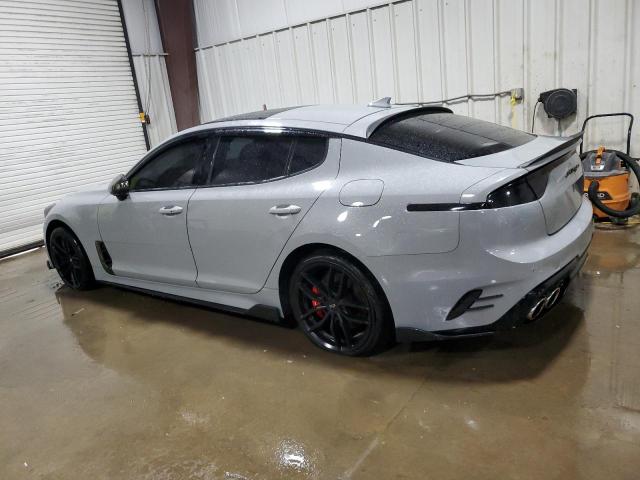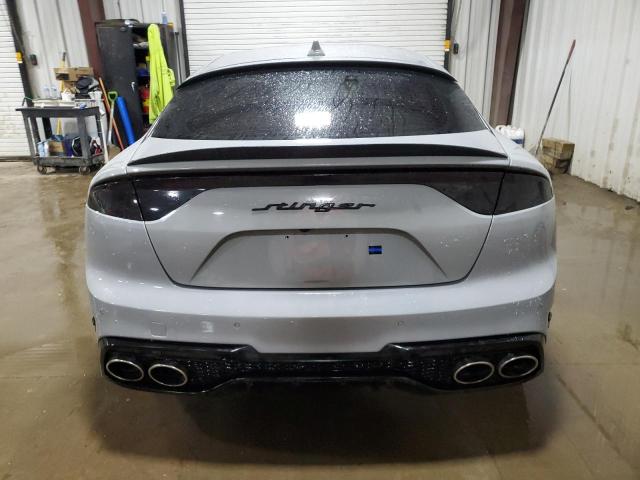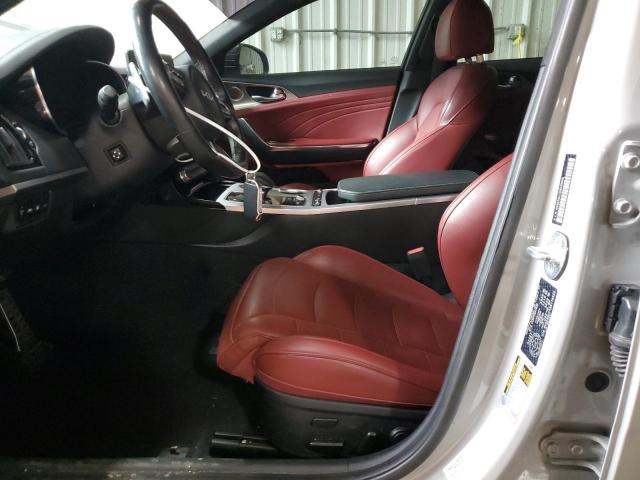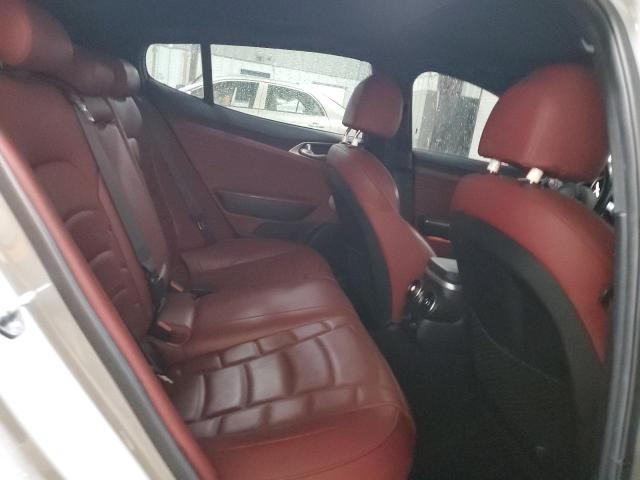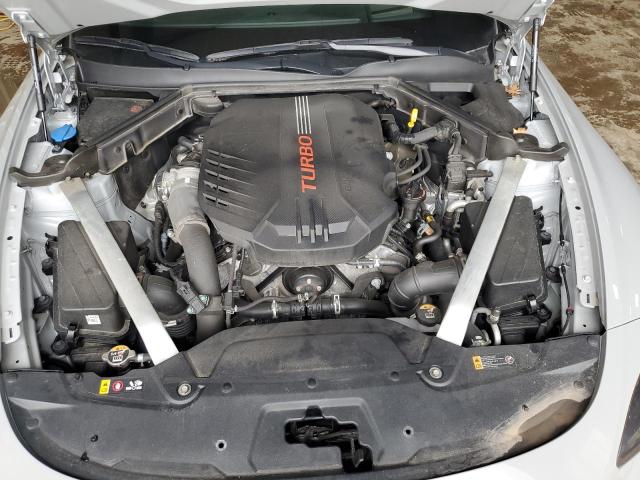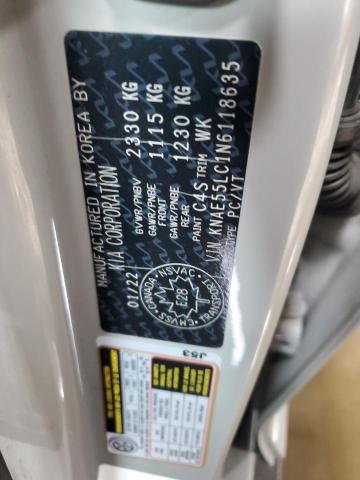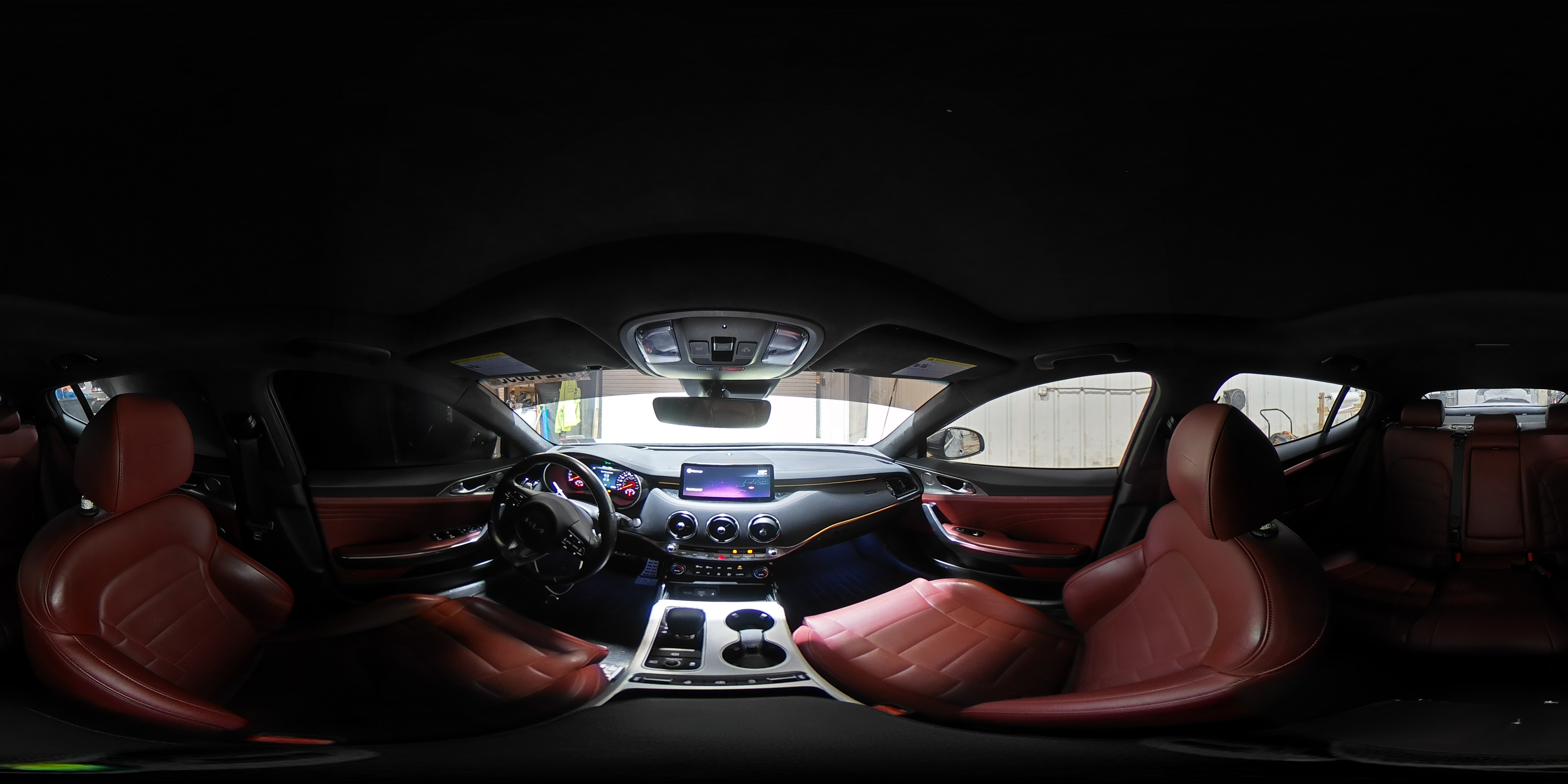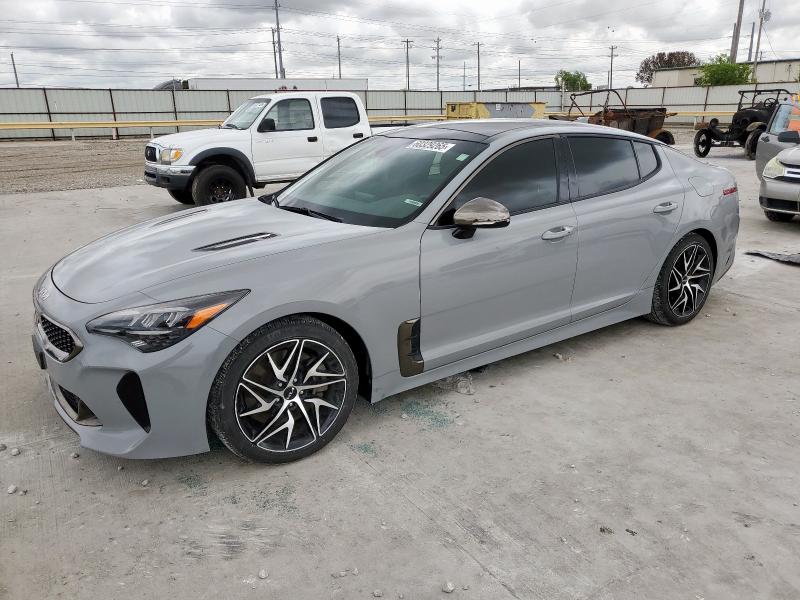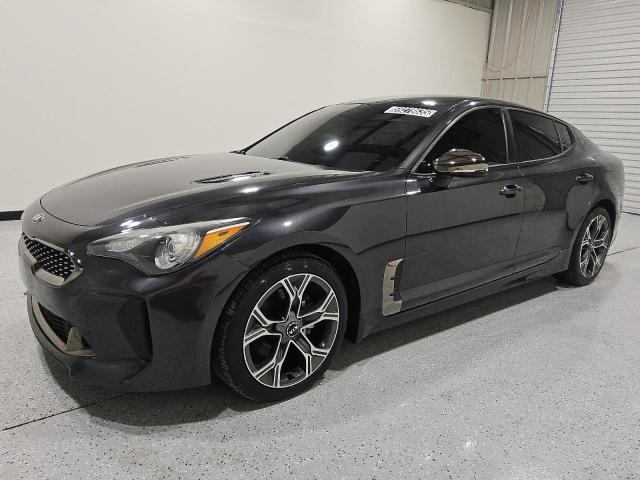2022 KIA STINGER | KNAE55LC1N6118635
 ❯
❯Lot details
- Sale Date2025-06-11
- Lot Number51219695
- ACV32120.5 $
- Sale documentPA -
- LocationPA - PITTSBURGH WEST
- Odometer35,788 miles (57,595 km)
- Primary DamageFRONT END
- Secondary DamageUNDERCARRIAGE
- SellerState Farm Insurance
Vehicle specifications
3
~$50,000
Engine: 3.3L twin-turbocharged V6
Torque: 510 Nm
0–100 km/h: ~4.7 s
The Kia Stinger GT was not just a bold move — it was a declaration. With a 365+ hp twin-turbo V6, rear- or all-wheel drive, and a fastback design penned by former Audi chief designer Peter Schreyer, it delivered German-style grand touring performance at a fraction of the price.
Engineered on a dedicated RWD platform with input from Albert Biermann (ex-BMW M division), the Stinger featured a near 50:50 weight distribution, mechanical limited-slip diff (RWD), Brembo brakes, and adaptive suspension in GT versions. The AWD model added a dynamic torque vectoring system, enhancing traction and cornering stability.
While its interior leaned more toward GT than track weapon, the Stinger offered leather, heated/cooled seats, a premium Harman/Kardon audio system, and a digital driver display. It blended performance with comfort — a highway weapon that could do 270 km/h in silence, or attack backroads with composure.
The Kia Stinger GT2 earns its place in the performance registry as Kia’s first and only true sport sedan, offering turbocharged V6 thrust, mature chassis tuning, and sleeper looks — all wrapped in a package that redefined what the Kia badge could mean to driving enthusiasts.
Final Bid Kia Stinger (2022)
$10,600
$14,350
$18,200
Body Styles
A five-door fastback with a long hood, coupe-like roofline, and liftback rear hatch. The Stinger’s design balances executive sedan proportions with sporty elements such as quad exhaust tips, side air extractors, and LED light signatures. It blends premium grand tourer aesthetics with practical five-door utility, appealing to both performance enthusiasts and everyday drivers.
Model Name Meaning (Manufacturer)
The name "Stinger" was chosen to evoke speed, agility, and sharpness, reflecting the car’s aggressive dynamics and punchy design. It’s a clear departure from Kia’s historically conservative naming conventions, highlighting this model as a bold statement in the brand’s performance evolution.
Model Name Meaning (Languages)
"Stinger" is a globally recognizable word that needs no translation. It conveys sportiness, intensity, and provocation — aligning with Kia’s desire to position the model as a serious contender against established premium sport sedans across various markets.
Body & Interior Colors and Rims
The Kia Stinger, marked a bold entry into the performance grand tourer segment, and its visual presence was an essential part of its appeal. The exterior color palette was thoughtfully curated to match the car’s sporty, fastback silhouette, combining elegant metallics with bold, dynamic hues. Signature colors like Micro Blue, Ceramic Silver, Panthera Metal, and Aurora Black Pearl highlighted the Stinger’s refined lines, while high-impact tones like Hichroma Red, Federation Orange, and Ascot Green (exclusive to the GT-line and special editions) emphasized its aggressive, rear-wheel-drive stance. Select limited models, such as the GT1 and GT2, introduced satin finishes and unique paint options that stood out even further among mainstream offerings.
Inside, the Stinger blended premium materials with driver-focused design, offering upholstery in leather or Nappa leather, depending on trim. Common color schemes included Black, Red, and Beige, often contrasted with colored stitching or aluminum trim. The GT and GT2 trims featured upgrades such as quilted Nappa leather, flat-bottom steering wheels, and metallic or carbon-style accents. Red interiors paired with dark exterior tones became a signature look for the sportier variants, creating a dramatic, upscale ambiance. Ambient lighting, metal pedals, and turbine-style air vents added a subtle nod to classic grand touring cues while maintaining a modern, tech-driven feel.
Rims played a crucial role in the Stinger’s performance aesthetic. Base trims came with 17-inch alloys featuring a clean, multi-spoke design, while mid-level models stepped up to 18-inch wheels with a more sculpted look. The GT, GT1, and GT2 trims featured distinctive 19-inch wheels, including dark satin-finished split-spoke designs and turbine-style rims that enhanced brake cooling. Special editions like the Scorpion Package added exclusive black wheels and matching black exterior accents, reinforcing the car’s sporty attitude. Across all variants, the wheels were not just visual highlights — they were carefully selected to complement the Stinger’s chassis dynamics and confident grand touring character.
Top Expensive Options
- GT2 Performance Package (Brembo Brakes, Limited-Slip Differential, Launch Control): ~$2,000
- Harman Kardon Premium Audio System (15 Speakers, Subwoofer): ~$1,200
- Nappa Leather Seating with GT Sport Stitching: ~$1,500
- Wide Sunroof with Power Shade: ~$1,000
- Head-Up Display with Speed, Navigation, and Driver Assist Alerts: ~$900
- Advanced Driver Assistance Package (Smart Cruise, Lane Follow, Parking Sensors): ~$1,500
- 360-Degree Surround View Camera System: ~$900
- Remote Start with Heated/Cooled Seats Integration: ~$600
- Black Exterior Design Package (Mirror Caps, Badging, Wheels): ~$700
- LED Projection Headlights with Dynamic Bending: ~$750
vs Competitors
The Kia Stinger competed directly with the BMW 3 Series, Audi A5 Sportback, Genesis G70, and Dodge Charger. Against the BMW 3 Series and Audi A5, the Stinger offered more standard features, better value, and a more dramatic design, though it couldn’t quite match their badge appeal or chassis finesse. Compared to the Genesis G70, the Stinger prioritized practicality and grand touring comfort over tight handling. It challenged the Dodge Charger with its AWD availability, liftback utility, and superior cabin quality. Overall, the Stinger carved out a niche as a genuinely fun, high-value sports sedan with premium intent and GT-like poise.
Fun Fact
The Kia Stinger was engineered by former BMW M Division chief engineer Albert Biermann, and tuned on the Nürburgring Nordschleife, making it one of the most European-feeling Korean performance cars ever built. Its creation marked a turning point in how the world perceived Kia’s performance ambitions.


